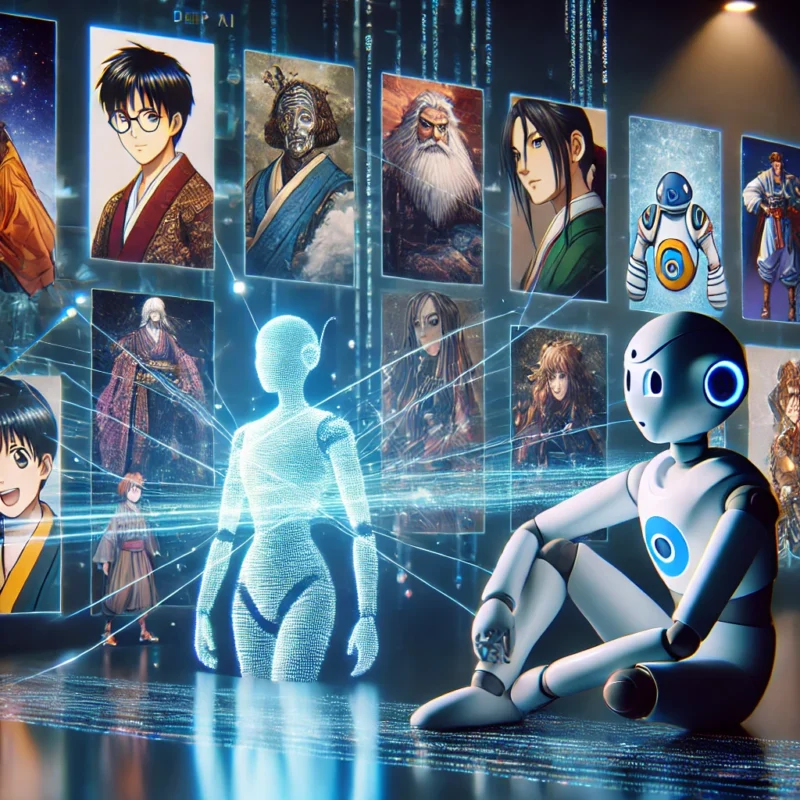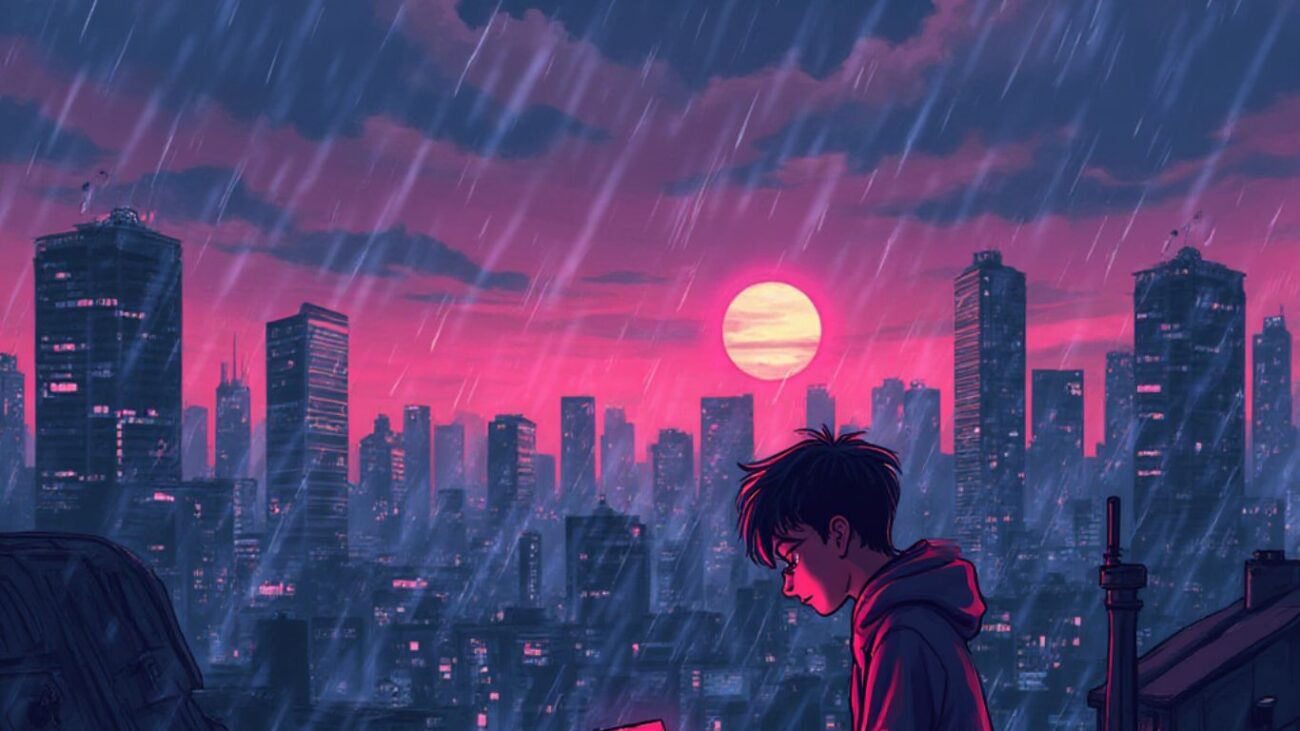By the time you finish reading, you’ll know exactly why now is the single greatest moment in history to go all-in on AI video content—and how you can ride this wave from zero to viral hero.
Welcome to the Wild West of AI Video
Let me paint you a picture.
It’s late at night. You’re scrolling through your phone, seeing the same old content—dances, cats, talking heads. Then, suddenly, a video pops up: Bigfoot, striding through a neon-lit city, waving at a crowd of robot tourists. The comments explode: “HOW DID YOU MAKE THIS?” “Is this real?!” “What AI did you use??”
This isn’t sci-fi. This is now.
Right this minute, a new billion-dollar industry is being born—and almost no one realizes how wide open it is. The early days of YouTube? The “gold rush” of TikTok? Those were the warm-up act. The main event is here, powered by Veo 3 and the next generation of AI video.
But here’s the twist: you don’t need a Hollywood budget or years of experience. You just need timing, creativity, and a pinch of boldness.
So, what’s happening? And why are creators with zero followers suddenly getting millions of views overnight?
Let’s break down the biggest shift in content creation since the first smartphone—and give you the viral formula the insiders are using (and you can steal).

The Hidden Billion-Dollar Window (and Why Most People Will Miss It)
Let’s get real for a second.
When AI tools for art and text exploded, most people hesitated. “It’s just a gimmick.” “This will never replace real artists.” Now? AI art is everywhere. Entire businesses are built on it. The people who jumped early? They cashed in.
Guess what? AI video is ten times bigger—and right now, it’s even more “empty” than those early AI art days. Imagine posting a video today and, because the competition is almost non-existent, waking up to a million views.
Sound crazy? That’s what’s happening. Right now, you can drop a weird, fun, or imaginative AI video—like a Bigfoot sighting, a robot wedding, or a talking squirrel reviewing crypto—and, with the right approach, catch a viral lightning bolt that launches your channel, business, or personal brand.
Most people are still “stacking bricks in Egypt,” waiting for permission, playing it safe. The bold ones are already mining gold in the digital hills.
Don’t look back in 5, 10, or 15 years and say, “I missed it.”
What’s Veo 3? The AI Video Engine That’s Changing Everything
Okay, time for the nerdy part (don’t worry, I’ll keep it juicy).
Veo 3 is the AI video tool turning heads across the internet. Imagine typing a single prompt—like “Epic medieval knight skateboarding through Times Square”—and getting a cinematic, hyper-realistic video in minutes.
No actors. No sets. No $10,000 camera rigs. Just pure imagination and a laptop.
Google, OpenAI, and a host of AI startups are in a war to build the next generation of video creation tools. Veo 3 is at the front of the pack: it can do high-res, creative, mind-blowing videos from the craziest ideas you can imagine. Every time this tech levels up, the “old” content looks boring overnight.
But here’s the kicker: the audience is starving for this stuff. People have never seen anything like it. The curiosity is off the charts. That’s why simple, weird, and even low-effort AI videos are getting millions of eyeballs right now.
The Wild Formula: How to Make Viral AI Videos (Even With Zero Followers)
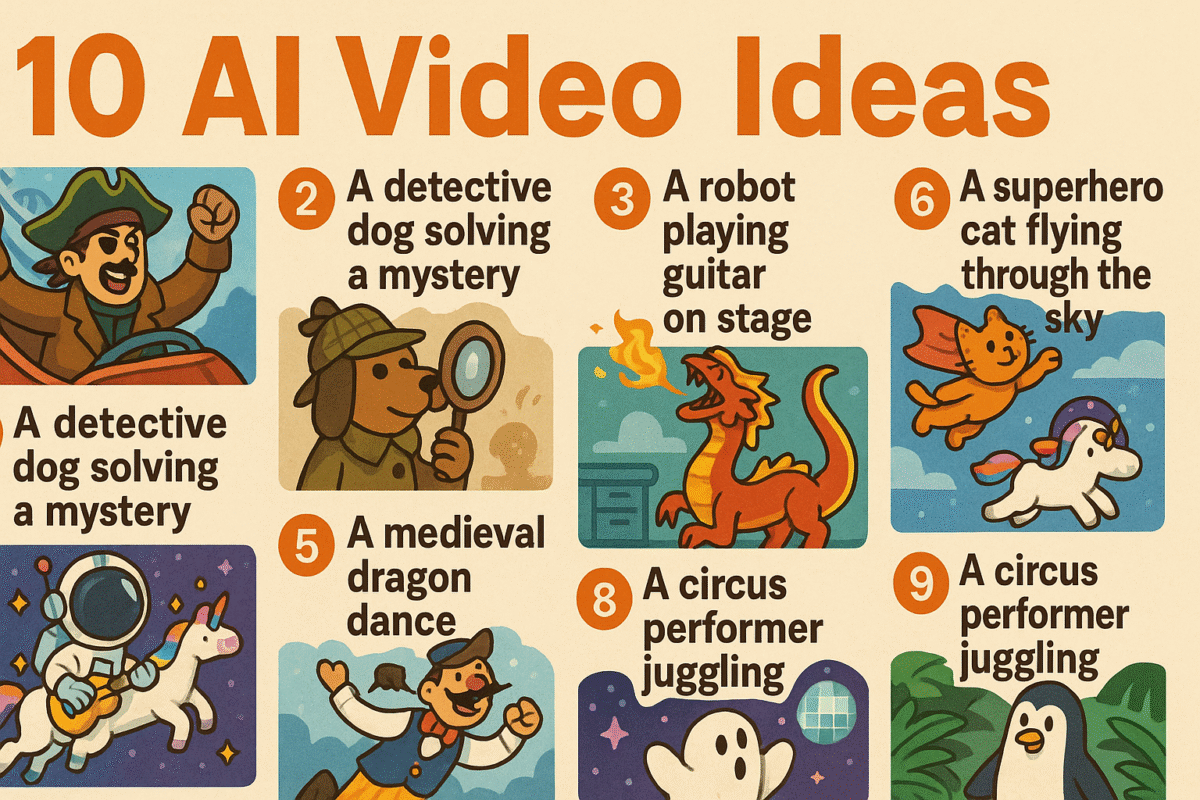
You want the formula? Here’s the formula:
1. Tap Into a Viral Curiosity or Meme
Start with something people already love to click on: Bigfoot sightings, alien landings, “what if?” moments, pop culture crossovers, impossible stunts. These are evergreen hooks.
2. Add an AI Twist
Ask yourself: “What’s impossible in real life, but totally possible with AI?”
- Dinosaurs at the World Cup?
- Elon Musk playing chess against a talking potato?
- A weather report from the surface of Mars?
You’re only limited by your imagination (and, okay, the AI’s current tech, but that’s improving every week).
3. Make It Look Effortless (But Not Bland)
Don’t overthink production value. What works now is the raw, experimental, sometimes even glitchy look. The weirder or more “AI” it feels, the more people want to share it.
4. Drop It While the Competition Sleeps
This is key. The “window” for viral AI video is wide open, but it won’t be forever. Drop your content now while viewers are hungry and big creators haven’t flooded the field.
5. Engage the Crowd
AI videos spark questions: “What app did you use?” “How did you do this?” “Can you make X?”
Respond, make follow-ups, turn the comments into your next video prompt. Ride the curiosity loop.
Real Examples: Viral Hits Made With Veo 3 (and Other AI Tools)
The Bigfoot Effect
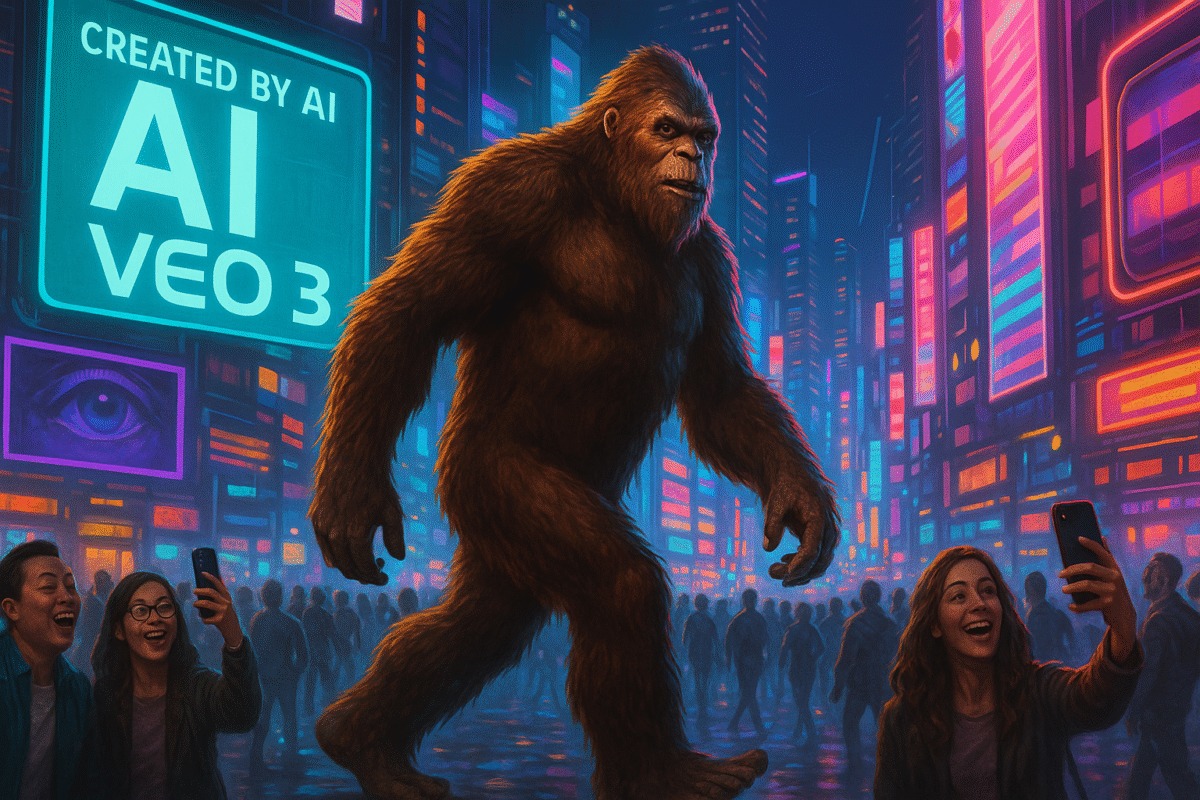
A creator posts a grainy, AI-generated “sighting” of Bigfoot in downtown Chicago. The video looks both “off” and eerily realistic. It explodes—millions of views, news outlets pick it up, comments flood in (“Is this real?!”). That creator? They didn’t even have a YouTube channel two weeks ago.
“Breaking News From The Future”
A TikTok account uses Veo 3 to post daily “news” from the year 2050:
- Mars colony fails after potato uprising
- Cat elected president
- AI makes pizza that tastes like regret
The formula: Real-looking news anchor, absurd AI footage, catchy captions. Viral. Every. Single. Day.
The Ultimate Crossover
Ever wanted to see Harry Potter duel Darth Vader in the Matrix? With Veo 3, someone did it. It’s rough, fast, and full of weird AI glitches. But nobody cares—the weirdness is the hook.
But Wait—Will This Last? (And How to Stay Ahead)
“Won’t this get saturated?”
“Will the big companies take over?”
Short answer: Eventually. But right now? The doors are wide open.
- AI video tools are improving, but they’re not mainstream yet.
- Audiences are starved for new, weird, never-before-seen content.
- Platforms are rewarding early adopters with viral reach.
The smart move? Don’t wait. This is the “Wild West” moment. Plant your flag.
How to future-proof yourself:
- Build a following while the iron is hot
- Get creative with prompts nobody’s tried
- Experiment with formats—shorts, sketches, “found footage,” mockumentaries, anything
- Don’t just chase trends—start them
How to Start (Even If You Have No Idea What You’re Doing)
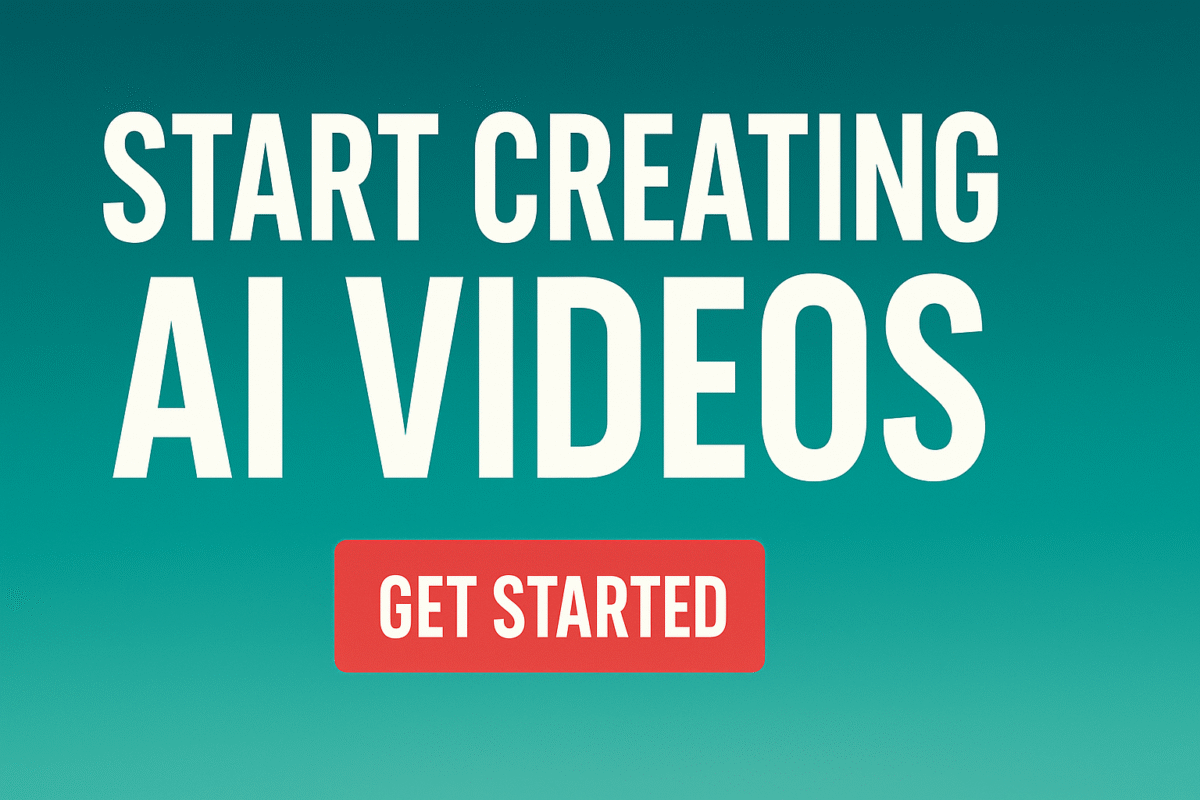
You don’t need a PhD in computer science or a million-dollar setup.
Here’s your cheat code:
- Pick a viral hook (see above)
- Find a trending AI video tool (Veo 3, Runway, Pika, etc.—Google “AI video generator” for the latest)
- Write a wild prompt (seriously, let your imagination go nuts)
- Generate your first video
- Upload with a catchy title and hashtags (think: “Bigfoot Caught on Camera with AI,” “What if Dinosaurs Invaded New York—AI Simulation”)
- Repeat. Consistency is key. Your tenth video might be the one that blows up.
Pro tip: Document the process. People love behind-the-scenes “How I Did This” videos. You’ll build authority while riding the trend.
The Final Secret: Don’t Be Afraid to Look Silly
The biggest obstacle isn’t the tech. It’s fear.
Most creators hesitate. “What if it flops?” “What if people laugh?”
But here’s the secret: in this window, everyone is experimenting. The weird, the fun, the rough edges—that’s what people want.
Remember:
- The people laughing now will be asking you for advice in a year
- You can’t “fail” if you’re early in a new medium
- Most success stories started as “crazy experiments”
Conclusion: Will You Miss the Gold Rush (Or Become the Next Viral Hit)?
Every day, the opportunity window shrinks a little more. Soon, everyone will be using AI video, the algorithms will get tougher, and the “Wild West” will close. But right now? It’s all yours for the taking.
Imagine looking back a decade from now, not as the person who “almost started,” but as the one who jumped, built an audience, and changed the game—using nothing but boldness and an AI video tool.
The next billion-dollar creator? It might as well be you.
Ready to dive in?
Try Veo 3 (or any trending AI video tool), share your wildest prompt, and drop the link below. Let’s see who can break the internet next.

